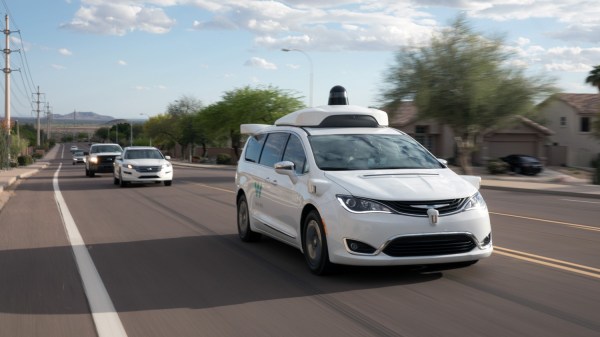Did artificial intelligence just jump the shark? Maybe so, and it came from the legal world of all places, with this report of an AI-generated victim impact statement. In an apparent first, the family of an Arizona man killed in a road rage incident in 2021 used AI to bring the victim back to life to testify during the sentencing phase of his killer’s trial. The video was created by the sister and brother-in-law of the 37-year-old victim using old photos and videos, and was quite well done, despite the normal uncanny valley stuff around lip-syncing that seems to be the fatal flaw for every deep-fake video we’ve seen so far. The victim’s beard is also strangely immobile, which we found off-putting.
legal34 Articles
Hackaday Links: April 21, 2024
Do humanoid robots dream of electric retirement? Who knows, but maybe we can ask Boston Dynamics’ Atlas HD, which was officially retired this week. The humanoid robot, notable for its warehouse Parkour and sweet dance moves, never went into production, at least not as far as we know. Atlas always seemed like it was intended to be an R&D platform, to see what was possible for a humanoid robot, and in that way it had a heck of a career. But it’s probably a good thing that fleets of Atlas robots aren’t wandering around shop floors or serving drinks, especially given the number of hydraulic blowouts the robot suffered. That also seems to be one of the lessons Boston Dynamics learned, since Atlas’ younger, nimbler replacement is said to be all-electric. From the thumbnail, the new kid already seems pretty scarred and battered, so here’s hoping we get to see some all-electric robot fails soon.
San Francisco Sues To Keep Autonomous Cars Out Of The City
Although the arrival of self-driving cars and taxis in particular seems to be eternally ‘just around the corner’ for most of us, in an increasing number of places around the world they’re already operational, with Waymo being quite prevalent in the US. Yet despite approval by the relevant authorities, the city of San Francisco has opted to sue the state commission that approved Google’s Waymo and GM’s Cruise. Their goal? To banish these services from the streets of SF, ideally forever.
Whether they will succeed in this seems highly doubtful. Although Cruise has lost its license to operate in California after a recent fatal accident, Waymo’s track record is actually quite good. Using public information sources, there’s a case to be made that Waymo cars are significantly safer to be in or around than those driven by human operators. When contrasted with Cruise’s troubled performance, it would seem that the problem with self-driving cars isn’t so much the technology as it is the safety culture of the company around it.
Yet despite Waymo’s better-than-humans safety record, it is regarded as a ‘nuisance’, leading some to sabotage the cars. The more reasonable take would seem to be that although technology is not mature yet, it has the overwhelming advantage over human drivers that it never drives distracted or intoxicated, and can be deterministically improved and tweaked across all cars based on experiences.
These considerations have been taken into account by the state commission that has approved Waymo operating in SF, which is why legal experts note that SF case’s chances are very slim based on the available evidence.
Haier Europe Eases Off On Legal Threat And Seeks Dialogue
After initially sending a cease and desist order to [Andre Basche] – the developer of a Haier hOn plugin for Home Assistant – Haier Europe’s head of Brand and IoT has now penned a much more amicable response, seeking to enter into dialogue in search of a solution for both parties.
This latest development is detailed both in the ongoing GitHub issue, as well as the Takedown FAQ and Timeline document that [Andre] created to keep track of everything that’s going on since we last checked in on the situation. As things stand, there is hope that Haier Europe may relent, especially as the company’s US division has shown no inclinations to join in on the original C&D.
In the confusion following the initial C&D announcement demanding the take-down of [Andre]’s hOn-related repositories, it was not clear to many which Haier was involved. As it turns out, Haier Europe as a separately legal entity apparently decided to go on this course alone, with Haier US distancing themselves from the issue. In that same Reddit thread it’s noted that GE Appliances (part of Haier US) has had a local API available for years. This makes Haier Europe the odd one out, even as they’re attempting some damage control now.
Amidst this whirlwind of developments, we hope that Haier Europe can indeed reach an amicable solution with the community, whether it’s continued API usage, or the development of a local API.
Haier Threatens Legal Action Against Home Assistant Plugin Developer
Appliance manufacturer Haier has been integrating IoT features into their newer products, and as is so common these days, users are expected to install their “hOn” mobile application to access them. Not satisfied with that limitation, [Andre Basche] reverse engineered the protocol used by the app, and released a Python library and associated Home Assistant plugin to interface with a wide array of Haier appliances, which includes brands like Hoover, Candy, GE Appliances and others.
Unfortunately, it looks like his efforts have gotten him into a bit of legal hot water. In an issue recently opened on the project’s GitHub page, [Andre] explains the circumstances and legal options that have led him to consider pulling the repositories completely — mostly due to the cost of mounting a legal defense to the cease & desist from Haier Europe.
 What’s ironic here is that Haier has been part of the Connectivity Standard Alliance (CSA) since 2022, whose goal is to ‘promote universal open IoT standards’, including Matter.
What’s ironic here is that Haier has been part of the Connectivity Standard Alliance (CSA) since 2022, whose goal is to ‘promote universal open IoT standards’, including Matter.
It’s possible that a legal defense will be mounted against this C&D from Haier within the coming days. Yet regardless of the outcome here, it remains problematic that these IoT-enabled Haier appliances are connected to the Haier servers. Ideally they would be controlled locally, which is the goal of projects like [Miguel Ángel López Vicente]’s ESP Haier, that uses an ESP8266 to connect Haier AC units to the local WiFi and e.g. HA instances, all without requiring internet access.
This is sadly just one more example of why building your own off-line smart home can be such an incredible struggle.
Thanks to [Ar3itrary] for the tip.
The Latest John Deere Repair Lawsuit Now Has The Go-Ahead
Long time readers will have followed the twists and turns of the John Deere repair saga, in which the agricultural machinery manufacturer has used DRM to restrict the repair of its tractors. It may be hot stuff on the prairies, but it matters to everyone because it’s a key right-to-repair battleground. Now the company’s attempt to throw out the latest class-action lawsuit, this time in Illinois. has failed, paving the way for a meaningful challenge.
This lawsuit is special because has the aim of determining whether or not Deere conspired to drive up the cost of repair and edge out independent mechanics. It comes against a backdrop in which their promised access to repair software which we reported on back in January has failed to materialize, and this is likely to figure as an act of bad faith.
A failing of corporate culture is that the organisation can in its own eyes, never be wrong. In Deere’s case they have accrued plenty of bad publicity in the years they’ve pursued this ill-advised business model, and in case that weren’t enough they’ve alienated their core customers out on the farms to the extent that a second-hand Deere from before the DRM era has more value than its newer counterparts. Deere genuinely do make very good tractors, so for farmers loyal for generations to turn their backs on them is a very significant story indeed. One has to ask, how much bad publicity and how many lawsuits do they have to have before someone at head office in Moline figures out that DRM in tractors (or anything else for that matter) isn’t the great idea they once thought it was? Maybe this one will finally herald the moment when that happens.
Header image: Nheyob / CC BY-SA 4.0
Getty Images Is Suing An AI Image Generator For Using Its Images

Many AI systems require huge training datasets in order to achieve their impressive feats. This applies whether or not you’re talking about an AI that works with images, natural language, or just about anything else. AI developers are starting to come under scrutiny for where they’re sourcing their datasets. Unsurprisingly, stock photo site Getty Images is at the forefront of this, and is now suing the creators of Stable Diffusion over the matter, as reported by The Verge.
Stability AI, the company behind Stable Diffusion, is the target of the lawsuit for one good reason: there’s compelling evidence the company used Getty Images content without permission. The Stable Diffusion AI has been seen to generate output images that actually include blurry approximations of the Getty Images watermark. This is somewhat of a smoking gun to suggest that Stability AI may have scraped Getty Images content for use as training material.
The copyright implications are unclear, but using any imagery from a stock photo database without permission is always asking for trouble. Various arguments will likely play out in court. Stability AI may make claims that their activity falls under fair use guidelines, while Getty Images may claim that the appearance of perverted versions of their watermark may break trademark rules. The lawsuit could have serious implications for AI image generators worldwide, and is sure to be watched closely by the nascent AI industry. As with any legal matter, just don’t expect a quick answer from the courts.
[Thanks to Dan for the tip!]















